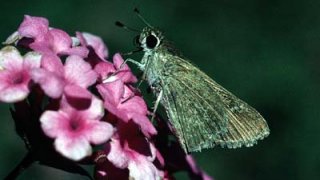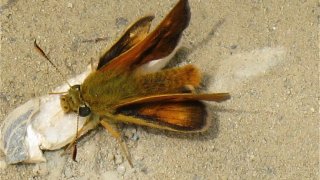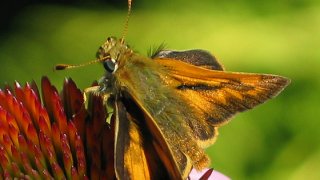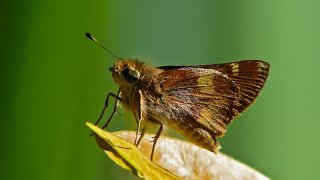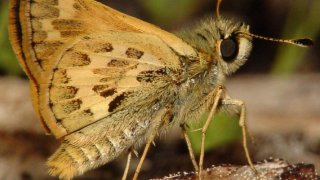The skippers are a worldwide family of about 3500 species that appear to be "sister" to the rest of the "true butterflies". The clubs on the tips of the antennae are usually hooked. Our California skippers fall into two or three subfamilies: the spread-wing skippers (Pyrginae), the folded-wing skippers (Hesperiinae), and the Heteropterinae.
The spread-winged skippers are generally dark brown and hold both sets of their wings open when landed. They use a wide variety of hostplants, including oaks, Ceanothus, legumes, mallows, and even saltbush. California genera include Pyrgus, Heliopetes, Erynnis, Thorybes, Epargyreus, and Pholisora.
The folded-wing skippers have a characteristic posture when they land: the forewings are held at a 45o angle to the rest of the body while the hindwing is held open and flat. This gives them a "fighter-jet" like appearance. They are largely orange and tawny, and many have whitish chevrons on the ventral hindwing, although some genera are dark brown. All members of this group feed on grasses or grassy-like plants (like sedges and rushes) as caterpillars, and as a result, they are often called the grass skippers. California genera include Hesperia, Ochlodes, Polites, Poanes, Hylephila, Lerodea, Amblyscirtes, and Atalopedes.
A third subfamily, the Heteropterinae, is weakly differentiated from the other skipper subfamilies, but the lone California representative is distinctive: Carterocephalus palaemon.

